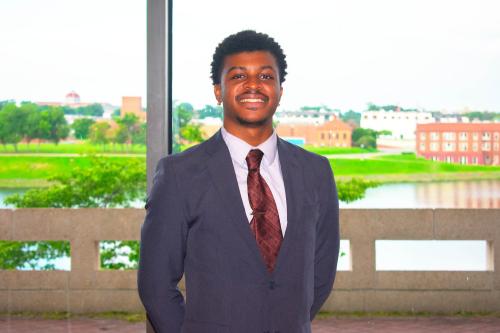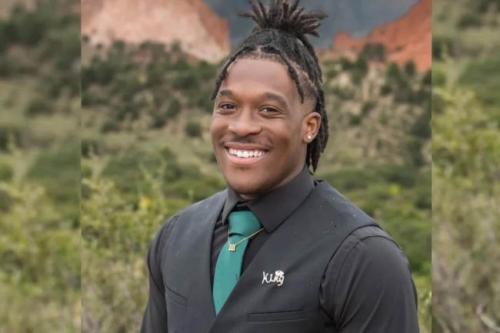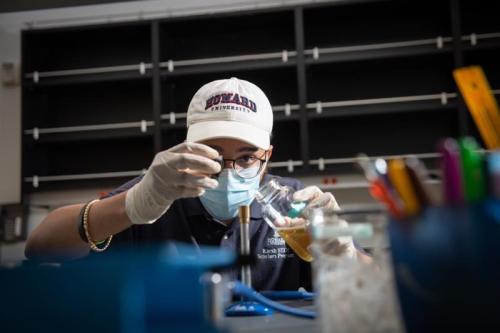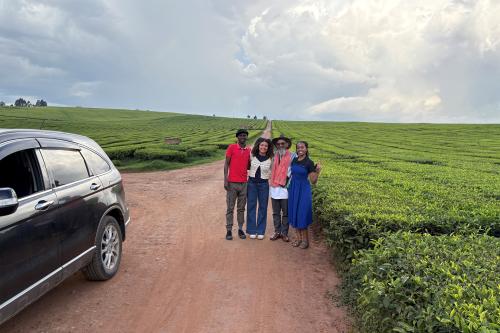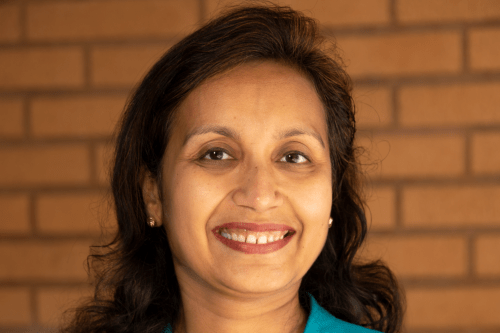Incoming freshman Ryan Cohn arrived on campus this summer with a clear sense of purpose — and a suitcase ready for her first trip abroad. The Baltimore native and electrical engineering major, who plans to minor in computer science, is part of this year’s Karsh STEM Scholars Program cohort and, at the time of our conversation, was days away from departing for Ghana as part of the program’s summer enrichment experience.
Cohn’s Howard story began with a campus visit that changed everything. “I came here for a day to visit my friend. She let me sit in her chemistry class. I went to her Caribbean dance team practice — they had a performance that day — and we ate lunch together. It was the whole day, from start to finish,” she recalled. “That day I left and I was like, I have to go here. It was a feeling I had. That’s the place I see myself. I was going to come here regardless.”
Her academic path took shape in a lab, not a lecture hall. A neuroscience research experience introduced her to the power of technology in understanding the brain. “That was the day I realized my passion for the brain wasn’t the biology. I didn’t want to touch a brain or work on diseases. I wanted to work on the technology used to see those neuron connections and synapses firing,” she said. “That summer, I was introduced to electroencephalography, a device used to read brain waves. I learned about other devices used in neuroscience. As I did more research, I saw those devices were very heavy in electrical engineering: circuits, sensors, and signal processing. Even our brain itself is composed of circuits, which is a huge thing in electrical engineering.”
As she settles into campus life, Cohn is eager to connect classroom fundamentals with hands-on experience. “Being a part of Karsh, we have done a whole bunch of exploring different fields, professors, and research interests,” she said, noting she has already gathering recommendations from upper class scholars and eyeing research groups across the university. “I’m excited about my first research experience and getting connected.”
Her curiosity extends well beyond the lab. A graduate of a performing arts high school where she studied vocal music, Cohn hopes to keep her creative side thriving at Howard. “I think I pursued singing because I was good at it, but I’m more passionate about dancing,” she said. “I would love to explore the dancing side. I definitely want to do engineering clubs, but I want to do a lot of dancing and performing. I don’t want to lose that.”
Cohn’s path to Karsh STEM Scholars feels, to her, almost fated. “I made it a goal to apply for 100 scholarships [but] I didn’t know about Karsh,” she explained. “When it was around the middle of January, I was going through my template and Karsh was on there. It was the weirdest thing ever. I applied for it [and] over time I visited my friend and I was like, I love Howard. Two weeks later I got an email that I was a semifinalist, then a finalist, then the interview. I definitely think [Howard] was a place I was supposed to be. It was kind of just placed in front of me, and I followed that feeling I felt when I visited, and everything worked out.”
I definitely think [Howard] was a place I was supposed to be. It was kind of just placed in front of me, and I followed that feeling I felt when I visited, and everything worked out.”



